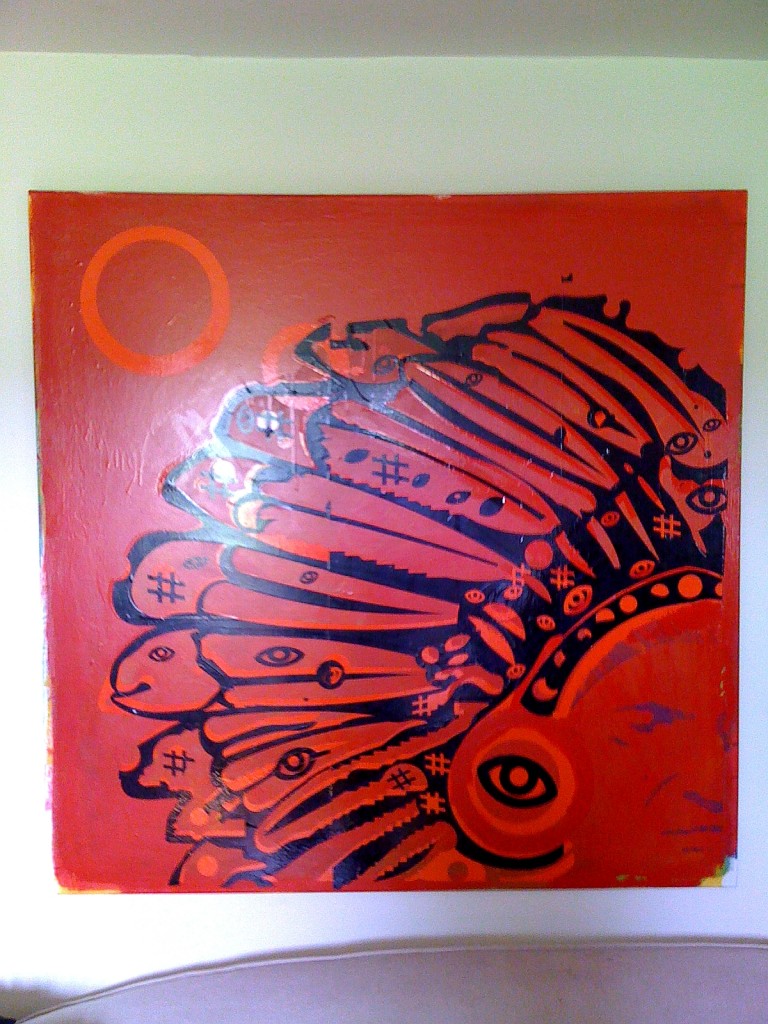
This painting was painted around 2002 / 03 by Peter Bright
I hadn’t seen this painting for nearly 10 years – until yesterday…
Prediction = the aesthetics of the system + the aesthetics of failure = Prediction
Materials
Organic: Commercial oil based paints mixed with animal fat and traditional oil paints. Emulsion paints mixed with traditional acrylic/watercolour/gouache paints
Synthetic: Commercial and domestic self-adhesive vinyl tape, cut with a commercial computer based design/cutting program, using Signlab v.4.95 software package.
Title: ‘Self Portrait in Red’
 The image above is a proposal for a painting whose width is 20 metres. Costs to produce approximately £10,000 to £12,500.
The image above is a proposal for a painting whose width is 20 metres. Costs to produce approximately £10,000 to £12,500.
I would find it very easy not to produce any visual work. The aesthetics of painting, the total confusion that it is still in, has devalued this important medium. It is no longer acceptable to follow Duchampian traditions and say that context is a primary factor. To claim something is art is simply not good enough. Duchamp said that a painting/sculpture died after about 40 or 50 years. After that they become Art History. What will historians be saying in 40 or 50 years time? Read more…
I was using vinyl, a material I have used commercially, as my preferred medium. The “plasticness” of commercial vinyl tapes, their tactile and glossy qualities make them vibrant and alive; when juxtaposed against natural materials or organic shapes and colors they become a contradiction, a complement, more intense and more synthetic……which is similar to Frank Stella’s work during the 1980’s 4 . I carried out experiments with this vinyl material; I have cut and slashed it to destruction, to gain a better understanding of the inherent stability of this medium. I have rejected the possibilities of cutting out images and shapes by hand…..the aesthetics of the system was more important.